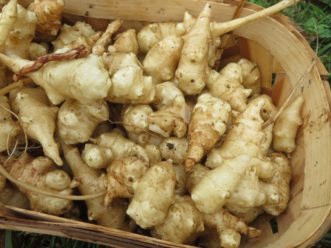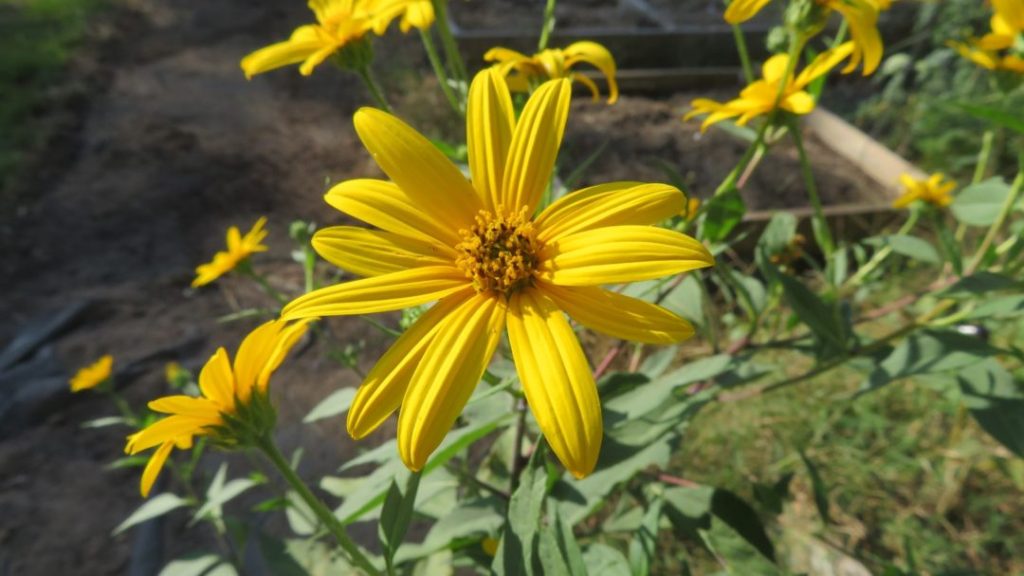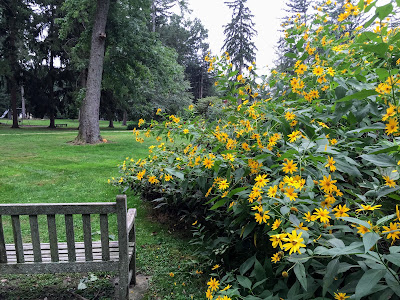We’ve started to have some pretty warm days recently, and it’s got me thinking a lot about what will be going into my garden this year. One plant I would encourage you to try is a sunchoke. It will definitely be in my garden this spring. Sunchoke, also known as a Jerusalem artichoke, or by its scientific name, Helianthus tuberosa, is a delicious tuber and beautiful bloom. Although both common names of this vegetable reference artichokes, the sunchoke is actually in the sunflower family. The plant offers beautiful yellow flowers in additon to the edible tuber.
Sunchokes resemble knobby potatoes, and their texture is somewhere between that of a potato and a water chestnut. They resemble thick, rounded ginger roots. Like a potato, sunchokes are a tuber, meaning they are a swollen underground stem rather than a root.

Sunchokes grow well here in Georgia with very minimal care. They are very resilient, but looser soils make harvesting easier, and too much standing water can cause tubers to rot. They also do well in containers, which makes them very easy to harvest. You can dump out the whole basket instead of trying to carefully dig them up without damaging the tubers. However, containers will require more frequent watering as they dry out more quickly.
Many seed companies sell different varieties, but you may also be able to find them in a grocery store or farmers market near you. All you need is a small offshoot of a tuber. Plant them in a sunny spot where they won’t block sunlight from other plants or obstruct your view. They can get up to 10 feet tall and provide a temporary screen. Plant them 2-3 inches deep in well drained soil. Make sure you choose a site where they have enough room to spread.


Sunchokes should be harvested after the plant has finished flowering in the fall, once weather cools. Sunchokes are a perennial plant in Georgia, so you can leave some tubers in the soil to get new plants in the spring.
My favorite way to prepare sunchokes is to roast in the oven or on the stove to get a crispy exterior and soft interior. UGA National Center for Home Food Preservation has a recipe for pickled sunchokes that I am interested in trying.
https://nchfp.uga.edu/how/can_06/artichoke_pickles.html
Because these plants are so vigorous take caution with your plantings- they may come back whether you want them to or not. It can be hard to ensure you’ve harvested every last tuber. If spreading too much is a concern, consider growing them in containers.
This is the time of year for planning and drawing up garden designs. Will you incorpoate this plant into your landscape?
Leave a Reply to Melissa Cancel reply